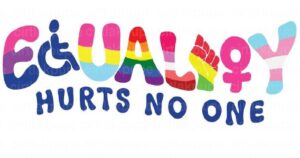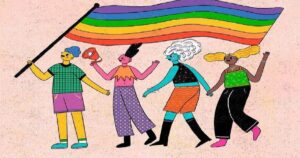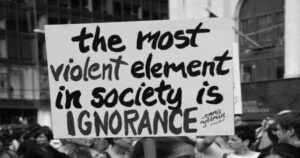Queer Studies and CRT: 2 Important Theories
Queer Studies and Critical Race Theory (CRT) are both critical theoretical frameworks, but they have distinct focuses and approaches:
Table of Contents
Queer Studies:
- Examines the social, cultural, and political constructions of sexuality and gender
- Challenges heteronormativity and cisnormativity (the assumption that everyone is straight and cisgender)
- Explores the intersections of sexuality and gender with other identities like race, class, and disability
- Seeks to promote LGBTQ+ visibility, inclusivity, and empowerment
Critical Race Theory (CRT):
- Analyzes the relationship between race, law, and power
- Examines how racism is embedded in institutions and structures, not just individual prejudices
- Focuses on the experiences and perspectives of marginalized communities, particularly Black people
- Aims to dismantle systemic racism and achieve racial justice and equity

Key differences:
- Queer Studies focuses on sexuality and gender, while CRT focuses on race and racism
- Queer Studies is more intersectional, considering multiple identities, while CRT is more focused on the Black experience
- Queer Studies seeks inclusivity and visibility, while CRT seeks to dismantle systemic racism
Emergence of Critical Race Theory:
Critical Race Studies (CRS) is an interdisciplinary field of research that examines the intersection of race, law, and power. It emerged in the 1980s as a critical response to the limitations of traditional civil rights discourse and has since evolved into a robust field of study with a wide range of applications.
Development of Critical Race Studies:
CRS developed in response to the failures of the civil rights movement to address systemic racism and inequality. Scholars like Derrick Bell, Kimberlé Crenshaw, and Richard Delgado challenged traditional notions of race and racism, arguing that the law was not a neutral arbiter of justice but a tool of oppression.
Important Proponents:
- Derrick Bell: A pioneer of CRS, Bell’s work on critical race theory and interest convergence theory has been instrumental in shaping the field.
- Kimberlé Crenshaw: Crenshaw’s work on intersectionality and critical race feminism has expanded the scope of CRS.
- Richard Delgado: Delgado’s work on critical race theory and Latino critical race theory has been influential in developing the field.
Important Works:
- Derrick Bell – “Race, Racism, and American Law” (1973)
- Kimberlé Crenshaw – “Demarginalizing the Intersection of Race and Sex” (1989)
- Richard Delgado – “Critical Race Theory: An Introduction” (2001)
Magazines:

- Critical Race Theory: The Journal
- Race and Social Problems
- Journal of Critical Race Inquiry
- Berkeley Journal of African-American Law and Policy
- Harvard Journal on Racial and Ethnic Justice
Critical Race Studies (CRS) is built around several key concepts that help analyze the intersection of race, law, and power. Here are some of the key concepts in CRS:
- Critical Race Theory (CRT): A framework that critiques the relationship between race, law, and power.
- Intersectionality: The idea that multiple forms of oppression (racism, sexism, homophobia, etc.) intersect to produce unique experiences of discrimination.
- White Privilege: The unearned advantages and benefits that white people receive in society.
- Interest Convergence: The idea that advances in civil rights for marginalized groups only occur when they align with the interests of dominant groups.
- Standpoint Epistemology: The idea that knowledge and truth are shaped by one’s social location and experiences.
- Colorblindness: The idea that race should not be taken into account in legal decisions, which can ignore the realities of racism.
- Microaggressions: Verbal or nonverbal comments or actions that demean or devalue marginalized groups.
- Masculinism: The idea that masculinity is privileged and normalized, leading to the marginalization of femininity and other gender identities.
- Heteronormativity: The idea that heterosexuality is privileged and normalized, leading to the marginalization of LGBTQ+ individuals.
- Settler Colonialism: The idea that the United States is built on land stolen from indigenous peoples and that this history shapes contemporary power dynamics.
These key concepts help scholars and activists understand and critique the ways in which race and racism intersect with law, power, and other forms of oppression.
Emergence of Queer Studies:
Queer studies is an interdisciplinary field of research that emerged in the 1990s, focusing on the study of sexuality, gender, and sexuality’s intersection with other social categories like race, ethnicity, class, and disability. Queer studies challenges traditional notions of sexuality and gender, seeking to understand the complex and nuanced experiences of marginalized communities.

Development of Queer Studies:
Queer studies evolved from the LGBTQ+ rights movement of the 1960s and 1970s, which sought to challenge societal norms and demand equal rights for sexual and gender minorities. The field gained momentum in the 1980s with the AIDS epidemic, which highlighted the need for a more comprehensive understanding of sexuality and its relationship to health, politics, and culture.
In the 1990s, queer studies began to take shape as a distinct field of research, influenced by poststructuralist and postmodern theories. Scholars like Michel Foucault, Judith Butler, and Eve Kosofsky Sedgwick laid the groundwork for queer studies, challenging traditional notions of sexuality and gender.
Important Proponents:
- Michel Foucault: Foucault’s work on the history of sexuality and the construction of sexual categories laid the foundation for queer studies.
- Judith Butler: Butler’s concept of gender performativity revolutionized the understanding of gender and sexuality.
- Eve Kosofsky Sedgwick: Sedgwick’s work on queer theory and the epistemology of the closet remains influential.
- David Halperin: Halperin’s research on queer theory, sexuality, and cultural studies has been instrumental in shaping the field.
- José Muñoz: Muñoz’s work on queer theory, performance, and Latina/o studies has expanded the scope of queer studies.
Important Works:
- Michel Foucault – “The History of Sexuality, Vol. 1” (1976)
- Judith Butler – “Gender Trouble: Feminism and the Subversion of Identity” (1990)
- Eve Kosofsky Sedgwick – “Epistemology of the Closet” (1990)
- David Halperin – “One Hundred Years of Homosexuality” (1990)
- José Muñoz – “Disidentifications: Queers of Color and the Performance of Politics” (1999)

Magazines:
- GLQ: A Journal of Lesbian and Gay Studies (1993-present)
- Queer Studies: An Interdisciplinary Journal (1996-2004)
- Sexualities: Studies in Culture and Society (1998-present)
- Transgender Studies Quarterly (2014-present)
- QED: A Journal in GLBTQ Worldmaking (2014-present)
Queer theory is a field of study that challenges traditional notions of sexuality, gender, and sexuality’s intersection with other social categories. Some key concepts in queer theory include:
- Queerness: A term that resists definition and categorization, queerness represents the fluid and ambiguous nature of sexuality and gender.
- Gender Performativity: The idea that gender is performed and produced through cultural norms and expectations, rather than being an inherent trait.
- Heteronormativity: The assumption that heterosexuality is the norm and that all individuals are straight unless proven otherwise.
- Homophobia: Discrimination and prejudice against individuals who identify as LGBTQ+.
- Intersectionality: The recognition that sexuality and gender intersect with other social categories like race, class, and disability.
- Queer Temporality: A concept that challenges traditional notions of time and space, queer temporality represents the non-linear and fluid nature of queer experiences.
- Queer Spatiality: The idea that queer individuals occupy and create alternative spaces that challenge traditional notions of space and belonging.
- Gender Trouble: A concept introduced by Judith Butler, gender trouble represents the subversive and disruptive nature of gender performances that challenge traditional gender norms.
- Sexual Citizenship: The idea that sexual minorities demand recognition and rights as citizens, challenging traditional notions of citizenship and belonging.
- Queer Utopia: A concept that imagines alternative futures and possibilities for queer individuals and communities, queer utopia represents a space of hope and liberation.

These key concepts in queer theory offer a framework for understanding and challenging traditional notions of sexuality, gender, and their intersection with other social categories.
In conclusion, queer studies is a vital field of research that has challenged traditional notions of sexuality and gender, seeking to understand the complex experiences of marginalized communities. The field’s development is attributed to the contributions of pioneering scholars, and its importance is reflected in the numerous works and magazines dedicated to queer studies.







One thought on “Queer Studies and CRT: 2 Important Theories”